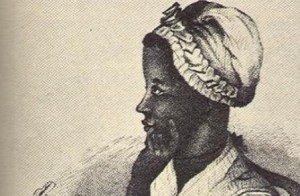Harriet Beecher Stowe and the Beecher Preachers
Middle Grade/Biography
Fritz, Jean. Harriet Beecher Stowe and the Beecher Preachers. New York: G.P. Putnam and Sons, 1994.
Harriet Beecher Stowe wrote Uncle Tom’s Cabin in 1852, eight years before the start of America’s Civil War. This is America’s first protest novel (according to many scholars) and is often listed as one of the books that had a profound change on society.
Harriet came from a large family. Her father was Lyman Beecher, a well-known New England preacher. Lyman Beecher wanted his seven sons to become preachers. Lyman’s goals for his daughters was marriage and motherhood but they weren’t wilted flowers. Lyman’s drive and high expectations drove some of them to become educators, lecturers and writers. Harriet struggled to make her voice heard in this large family of strong personalities which consisted of three sets of siblings to three different mothers. She yearned to achieve something other than being a wife, mother and Lyman Beecher’s daughter. Over time, she transformed from a shy often melancholy young woman whose family struggled financially, to a confident writer, speaker and abolitionist.
WHY I LOVED READING THIS BOOK:
Harriet (and all of her siblings) was taught to think and believe as her father did. Her brothers were not just expected to become preachers but to teach the Calvinist beliefs their father preached. Harriet had been against slavery but was not impassioned by the issue. The passage of the Fugitive Slave Act changed her opinions and propelled her to write Uncle Tom’s Cabin. The book’s publication brought her fame and wealth but Harriet never lost sight of the cause.
Harriet was a fighter and a survivor – for herself and for the abolition of slavery.
A SHORT HISTORY OF HARRIET BEECHER STOWE’S NEW ENGLAND:
The period between the War of 1812 and before the Civil War is known as the Antebellum period. The era saw the rise of abolition and of the division between those who supported slavery and those who opposed it. There was an increase in manufacturing in the north. The textile industry grew in New England thanks to development and introduction of the spinning-jenny by British business person Samuel Slater.
Other innovations changed the economy of the north. In 1843, Richard M. Hoes developed the rotary printing press. Soon millions of newspapers could be printed and distributed cheaply as more people learned to read, Newly built canals, railroads and roads improved the way people traveled.
The borders of the United States expanded as fortune seekers and others settled uncharted territory. Between the years 1790 and 1840, the Second Awakening movement grew in influence and popularity especially among Baptists and Methodists and inspired the beginnings of the abolitionist and temperance movements.
Slaves used many passive forms of resistance including damaging equipment and working slowly but they also rebelled openly. in response to the rebellions, white militias and mobs formed and legislators passed slave codes and other laws. In the north, the slave rebellions, evangelical fervor and the new printing presses galvanized the abolitionist movement.
Against this background, Harriet Beecher Stowe wrote Uncle Tom’s Cabin.
Harriet Beecher Stowe grew up in New England, moved to Cincinnati, Ohio and returned to New England. To read more about Harriet Beecher Stowe’s house visit the following link:
https://www.harrietbeecherstowecenter.org/





